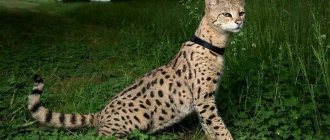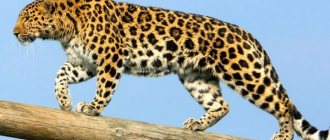Origin of the species and description
Photo: Gray squirrel
The eastern or Carolina gray squirrel (Sciurus carolinensis) came to us in Europe from North America. These squirrels were first introduced to the British Isles in the mid-19th century. Gradually, this species spread throughout Europe and Russia, found in forests, parks, plantings, in the Russian taiga and forest-steppe areas.
The ancestors of the gray squirrel, called Iscbyromyides, which later evolved into Sciurides, lived in North America more than 40 million years ago. From this species evolved modern rodents, ground squirrels, American and Japanese flying squirrels and prairie dogs. The modern species “Common squirrel” Sciurus vulgaris is only about 3 million years old.
Video: Gray squirrel
Squirrels have been kept as pets since ancient Rome. In the mythology, legends and fairy tales of India and Germany, the squirrel occupies a special place. For example, the German god Donar considered the squirrel a sacred animal, thanks to its fiery coat. And in Indian legends, a squirrel had the power to dry up an entire ocean with its tail.
The name “squirrel” translated from Greek means “shadow, tail,” which is very suitable for this nimble and agile animal that moves like lightning, leaving only a shadow due to its fluffy tail. The Latin word for gray squirrel is Gray Squirrel (Sciurus carolinensis). In ancient Russian texts, the squirrel was mentioned as “veksha”.
The rapid spread was facilitated by the lack of predators that would hunt them as in North America. The climate in Europe is milder, winters are warmer, so the animals are actively breeding and capturing new territories. The eastern (gray) squirrel can be found on every continent except Australia and countries with a Mediterranean climate.
Nibelung
Nibelungs are called the long-haired version of the Russian Blue, since representatives of this breed were actively involved in their selection. Indeed, their appearance is similar, and the tips of the Nibelung's hairs also have silver tipping. But there are also differences. First of all, it is long (more precisely, semi-long) thick fur, more developed muscles, and not such a bright eye color. This is a smart, good-natured and affectionate cat.
Despite the obvious relationship, the “founding fathers” of the breed were ordinary mongrel cats that were born in the United States in the 80s of the last century. Their owner logically reasoned that her unusual animals were worthy of the attention of the geneticists of the TICA felinological system. Indeed, she managed to interest specialists, and a decision was made to create a new breed. It received a beautiful legendary name for two reasons. The word "Nebel" means "fog" in German, which suits her appearance very well. And of course, in honor of the famous German epic.
Appearance and features
Photo: Animal gray squirrel
The gray squirrel has a long and muscular body, short legs with long claws, and there are no tufts on the tips of its ears, unlike the red squirrel. The hind legs have five toes, and the front legs only four, which helps her jump from branch to branch faster. Long claws allow it to hold tightly and not fall from a great height of a tree.
The weight of an adult individual is about 1000 g, body length is 32 cm, they are larger and more aggressive than their relatives - red squirrels. Currently, they have almost been driven out of their natural habitat. The color ranges from light ash to dark gray, and the belly is white, with golden and red colors on the paws. Outwardly, it is impossible to distinguish a male from a female; the animals look exactly the same.
Fun Fact: Her long tail makes up 2/3 of her body length and helps her jump long distances. The tail is protection from cold, heat and helps maintain balance. A jump of six meters is not at all the limit of the physical capabilities of a gray squirrel. In winter and summer, the squirrel molts and its coat changes.
In preparation for winter, the squirrel eats a lot, accumulates fat, and depending on the season, the fur becomes thicker and warmer. The average lifespan of a squirrel is about five years, some individuals live up to twelve years, but only in captivity. In the Northern regions, where conditions are harsher, squirrels live shorter lives, many individuals die from cold and disease.
The gray squirrel is very active, it is constantly moving in search of food. She has large and widely spaced eyes; thanks to their location on the animal’s muzzle, she has a wide viewing angle, so she sees danger perfectly. Because of its beautiful fur, the squirrel becomes an object for hunting and fishing. The fur of young animals is especially valued.
Animals extinct in this century
Over the 20 years of the 21st century, the list of extinct animals has been replenished with a hundred species. In the summer of 1972, a male Abingdon elephant tortoise was found in the Galapagos Islands. Giant animals were exterminated for 100 years in order to obtain oil and meat.
Scientists have been trying to prolong the genus of a single male for several decades. In the summer of 2012, the only representative of this species died when it turned 100 years old.
Male Abingdon elephant tortoise
The large population of the medieval Pyrenean ibex has declined sharply since the mid-20th century due to intensive hunting for meat and valuable horns. The last representative was a female, who died in the winter of 2000. Scientists have tried to implant ibex embryos into other goats. All attempts ended in failure.
Pyrenean ibex
The past century has been marked by numerous herds of the Cameroonian black rhinoceros, which grazed the territories of Cameroon. By the beginning of 2000, hunting for the animal's valuable horn had reduced the number of the animal to 10 individuals.
Black rhinocerosReference. In 2011, the International Union for Conservation of Nature declared that the giant animals, almost 4 meters high and weighing up to 1,500 kg, were considered extinct. There is not a single black rhinoceros left on the planet.
Just recently, China's Yangtze River was seething with numerous schools of Chinese river dolphins. White-gray animals with a body up to 2.5 meters, weighing almost 170 kg, made rookeries in shallow water.
Chinese river dolphin
Water pollution from industrial waste caused by local poachers caused the death of the population. The last animal living in the national park died in the summer of 2002. A few years later the species was declared extinct.
The black pages of the Red Book of Russia have been replenished with the following animals:
- black eagles;
- Atlantic sturgeon;
- kulans;
- Przewalski's horses;
- Transcaucasian tigers.
Responsibility for the disappearance of animals lies with humans. Habitat destruction, environmental pollution, and poaching are causing the extinction of rare animals.
Atlantic sturgeon
Transcaucasian tiger
Kulan
Przewalski's horse
Black Eagle
Where does the gray squirrel live?
Photo: Gray squirrel
As a place of residence, the squirrel prefers to settle in mixed or coniferous forests, preferably with a large area. One squirrel can occupy an area of up to 4 hectares. Feels best in a temperate climate zone. They cannot be found in flat and desert areas; they avoid open spaces.
On the surface of the earth, the squirrel feels uneasy, so at the slightest rustle it runs away into the trees. As a home, the gray squirrel chooses hollows or abandoned bird nests. If there is no suitable place, it can build an open nest, in a fork in the branches. In gardens or parks, she can live in a birdhouse.
During hot times of the day, it prefers to sleep in a cool nest, and forages for food early in the morning and in the evening. The gray squirrel avoids direct sunlight and dampness. This is a diurnal animal, active only during daylight hours. Many squirrels settle closer to people, who often feed them in special feeders.
What does the gray squirrel eat?
Photo: Gray squirrel in Russia
The gray squirrel is an omnivore, like most rodents.
Their main diet:
nuts; various seeds; fruits; shoots of young trees; cone seeds; insects; acorns; hazelnuts.
During the mating season, their need for protein increases, so they can eat a frog, eggs or a young chick. If hunger sets in, the squirrel becomes a pest: it eats the bark and shoots of young trees, contributing to their death. If there are fields with wheat or corn nearby, dig the bulbs out of the ground. Even flower beds are under threat, squirrels can feast on flowers if they are attracted by the sweet scent of nectar.
During the winter, the gray squirrel makes provisions for the winter. The survival rate of squirrels during the cold period depends on their number. They hide their supplies among the branches, bury them near the roots of trees, and hide them in hollows of trees. These are all kinds of berries, dried mushrooms, seeds, cones. If someone finds its hiding place early, the squirrel may not survive the harsh winter.
Squirrels have a good memory for hiding places, but sometimes they do not return for them and thus contribute to the spread of seeds. This is how entire groves of oaks and maples appear, thanks to the forgetfulness of the squirrel. The calorie intake of a squirrel differs depending on the season: in winter it eats about 80 grams of food per day, and in summer up to 40 grams.
Russian blue
A slender, muscular cat of medium size, on high legs, with a proportional wedge-shaped head and high-set ears. The calling card of the breed is its unique color, blue with silver tipping (lightened hair tips). It feels like the cat's coat is dusted with snow. She looks absolutely stunning with bright green eyes! The coat of Russian Blues is short and very thick - according to the standard, the hairs should be located vertically to the skin.
The history of the breed (like many other old breeds) is complex and somewhat confusing. But it is known that neither Russians nor modern Russian breeders have anything to do with its creation. These cats were bred at the beginning of the last century in Great Britain - based on animals imported from Arkhangelsk. At least that's what the most common version says. However, cats from other regions and representatives of other breeds were also involved in selection.
Features of character and lifestyle
Photo: American Gray Squirrel
The gray squirrel has a good memory, it is attentive and careful, and is considered one of the most intelligent species of rodents. However, very often, she forgets her caches of supplies, which other rodents find and eat with pleasure. In parks, many squirrels take food from human hands, but only young individuals are completely tamed.
Interesting fact: You should be careful when coming into contact with gray squirrels, they are carriers of smallpox, which is dangerous to humans. The proteins themselves are not susceptible to it. If a squirrel is in danger, it can bite the enemy painfully, using sharp teeth and scratching with its claws.
The squirrel has very strong and healthy teeth. Her incisors grow throughout her life, so experts use her teeth to determine her age. She cracks the strong shell of nuts with her incisors. At the back of the mouth are the molars. If a squirrel's tooth breaks and wears off, a new one will grow in its place. This is its main difference from most mammals.
The gray squirrel does not know how to accumulate large reserves of energy, it does not hibernate, so it must receive food several times every day. This is its weakness and vulnerability, because most mammals can go without food for a long time. In severe hunger, a squirrel can eat the bones of small dead animals.
The gray squirrel is a loner. She is not very aggressive towards her neighbors, but tries to avoid her relatives. Aggression towards relatives appears only during the rutting period. It communicates with its relatives by making funny short sounds, and with the help of its tail, the squirrel shows its displeasure or aggression. She has an active lifestyle; all her free time she actively jumps from branch to branch.
When there is danger, it makes a loud “clack” sound, notifying the entire neighborhood about it. Tries to avoid swampy areas, dampness, is a very timid and cautious animal, afraid of thunderstorms and sudden noise. The gray squirrel, unlike the red squirrel, is not at all afraid of water; it swims well if there is a need or danger to life.
Animals extinct before the beginning of the 20th century
Since ancient times, man has been hunting, but thoughtless extermination has always caused damage to the animal world.
Almost 2 centuries ago, the only extinct species - quaggas - were accustomed by humans to guard livestock. They got their name from the sound they used to warn of approaching predators.
Quagga
The Boer tribe destroyed the species by hunting for its tough hide and meat. The last representative of the quagga zebra died in the summer of 1883 in the Amsterdam Zoo.
Large birds that could not fly lived on the North Atlantic coast. They had impressive body sizes of up to 90 cm and a weight of more than 5.5 kg. They started hunting the great auk, chasing meat and priceless down.
Great auk
The last traces of the bird were lost in 1850. This is the first European representative of birds to completely disappear due to human fault.
Even earlier, the number of Falkland foxes that lived on the islands had declined. The increased demand for beautiful, warm fur has caused the death of predators. The last fox was shot at the end of the 19th century.
Falkland fox
Chinese paddlefish could amaze the most knowledgeable researcher. The largest fish reached 3 meters and weighed up to 280-300 kg. They were neighbors of the Chinese river dolphins that inhabit the Yangtze River. To date, there is no data on any fish from this population.
Chinese paddlefish
Songbirds up to 33 cm in size were inhabitants of the Hawaiian Islands. The reasons for the disappearance of kioea could not be established.
Kioea
Information about Reunion giant tortoises, reaching 115 cm in length, appeared in the Middle Ages. But already in 1700 the population became rare. A few years later the fossils disappeared from the face of the Earth.
Reunion giant tortoise
Cape lions, which lived on the African continent, are considered extinct. A special beast with a mane covering most of its body completely disappeared, leaving no offspring.
Cape Lion
Long-eared kangaroos from Australia are included in the list of animals that became extinct more than 100 years ago.
Long-eared kangaroos
A subspecies of antelope, the bubala, which roamed the meadows of Kenya, became extinct 65 thousand years ago and replenished the black pages of books.
Bubal
Attention! Today, the process of extinction of rare animals has accelerated by 500% than what nature intended for evolutionary development.
Bali tiger
Barbary lion Heather grouse
Worcester three-finger
Giant Fossa
Bare-chested kangaroo
Dodo or Dodo
Caucasian bison
Cameroon black rhinoceros
Chinese paddlefish
Mauritian parakeet
Martinique macaw
Mexican grizzly
Paleopropithecus Iberian ibex
moa bird
Rodriguez parrot
Red Mauritian rail
Steller's cormorant
Steller's cow
Passenger pigeon
Tour
Mika the crested pigeon
Epiornis
Social structure and reproduction
Photo: Gray squirrel animal
The gray squirrel gives birth to young two to three times a year. The female becomes sexually mature by the time she is one year old. The onset of estrus begins with the warmth of spring. The males begin to noisily court the female, chasing her and playing “catch up” for several days. During the rut, 3-4 males begin courtship around the female. Males attract attention by tapping their paws and making loud slurping noises.
After numerous fights, the strongest and largest male remains, who becomes the father of her offspring. After mating, the male actively marks the territory, and the female begins to build several nests at once. Inside them, she lines a soft bedding of moss, making the nest safe and cozy.
For overall strength, the base of the nest is made of clay and mud. The nest has a main and emergency exit, so that in case of danger you can easily and quickly leave the nest. The gray squirrel's pregnancy lasts up to 38 days. Baby squirrels are born blind, bald and very helpless; the mother stays near them all the time and feeds them with her milk every 3-4 hours.
Typically, three to ten baby squirrels are born, but only a few individuals survive from the brood. Their eyes open 2-3 weeks after birth. Most die out of curiosity, simply falling out of the nest, becoming a victim of predators.
Interesting fact: The gray squirrel is a very caring mother. If there are fleas or other parasites in the nest, she transfers the offspring to another nest.
Baby squirrels become independent after the ninth week, they leave the nest and begin to get their own food. At the same time, they live in the nest with their mother for some time.
Chartreuse
This is a large, strong, muscular cat, with a rounded head, small ears, large expressive eyes of yellow or copper color, and a pleasant, friendly expression on its cheeky face. The coat of the Chartreuse (exclusively blue) is short and very thick. Chartreux are naturally trained, calm, observant and affectionate. As a rule, they choose their favorite from the family, but find a common language with everyone.
This breed was bred on the basis of cats that appeared on the territory of France during the Middle Ages - it is generally believed that the Crusaders brought them with them. Their homeland is the mountains of Turkey and Iran with very harsh living conditions, which explains their extremely thick fur and excellent hunting skills. This is one of the oldest European cat breeds, the pride of French felinology, it was bred at the beginning of the last century.
Natural enemies of gray squirrels
Photo: Rodent gray squirrel
This species still does not have many enemies, which explains the rapid population of Europe, like other rodents. They are saved by their speed of movement, sensitive hearing and excellent reaction. You can only catch a squirrel on the ground, where it spends very little time. Most often, she becomes a victim of foxes and wolves, who patiently guard their prey. In the trees it is hunted by martens, wild cats and lynx.
In open areas, it is easy prey for birds of prey: eagle, falcon and kite. A crow or an ordinary domestic cat can steal small squirrels from a nest. Over the course of generations, the gray squirrel has “developed” its survival strategy. For example, running up and down and in spirals makes it very difficult for birds of prey to catch prey. And using thin branches to move, the gray squirrel can easily escape from the marten.
The natural enemies of the gray (Carolina) squirrel in America are:
- coyote;
- gray foxes;
- young wolves;
- eagle;
- golden eagle;
- owls;
- American marten;
- piranha;
- puma;
- goshawks.
As can be seen from the list, more than half of these predators are missing in Europe, which immediately affected the squirrel population. She can easily jump away from her pursuer to a great distance. A healthy and strong animal rarely falls into the teeth of a predator. Usually these are sick, weakened or very young proteins. Squirrels compete with chipmunks, mice, and hares for resources and food. But close to humans, the squirrel has almost no enemies; predators are mainly afraid of people, except cats.
Stripes forward
Among this color there are also stripes. Moreover, it is the stripe that makes the cat stand out and shows that it is a representative of a wild breed. Only cats can boast of such a feature. A gray tabby cat brings good luck to the house and makes a person energetic. Moreover, this fluffy dog teaches a person to approach all problems more simply. Striped pets are a symbol of warmth and home.
Of course, a purebred tabby cat can also have this color, so that not only a purebred cat can boast of this color.











